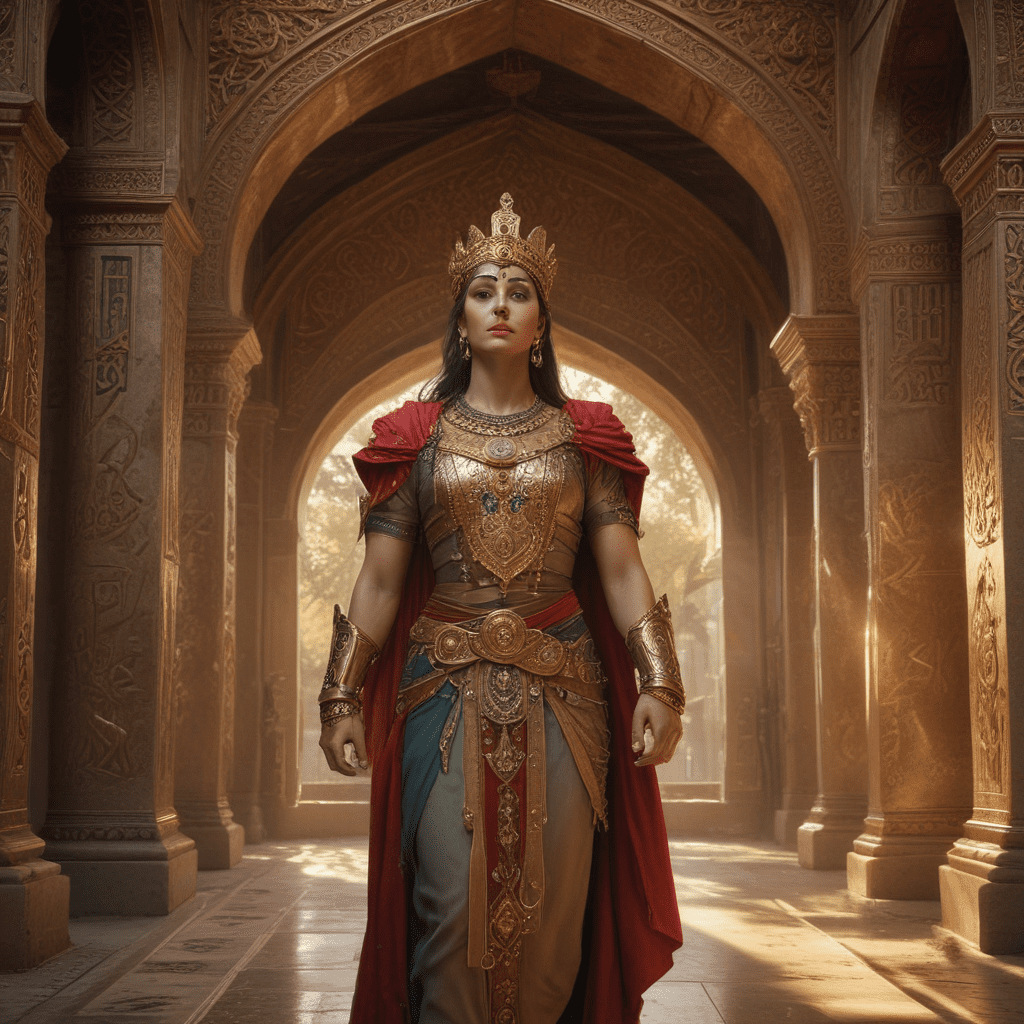Introduction:
The rich tapestry of Persian mythology, with its vibrant tales and enigmatic figures, has captivated imaginations for centuries. Woven into these narratives are riddles that pose profound questions, test intellect, and reveal hidden truths. This exploration delves into the enigmatic riddles of ancient Persia, unveiling their secrets and uncovering their deeper significance.
The Significance of Riddles in Persian Mythology:
Riddles permeate Persian myths and folklore, serving as more than mere wordplay. They are instruments for imparting wisdom, testing intelligence, and revealing hidden truths. Heroes like Rostam, renowned for his strength and cunning, faced riddles that tested his intellect and resolve. In the epic poem Shahnameh, Sohrab, Rostam's son, solves a riddle posed by his father, unknowingly revealing his identity, leading to a tragic misunderstanding. These riddles not only propel the narrative but also emphasize the importance of wit and wisdom in overcoming challenges.
Unveiling the Riddles of Creation:
Persian cosmogony presents riddles surrounding the origins of the universe and humankind. The enigmatic figure of Gayomart, the first human, emerges from a tree, sparking questions about the nature of creation and the interconnectedness of all living things. The cosmic struggle between Ahriman, the embodiment of evil, and Ahura Mazda, the benevolent creator, is riddled with complexity. Ahriman's actions, such as the creation of disease and suffering, pose questions about the nature of good and evil and the forces that shape existence.
Riddles of Divine Intervention:
Deities and prophets in Persian myths often pose riddles as tests of faith, instruments of justice, and sources of divine guidance. Jamshid, a legendary king, encounters the Simurgh, a mythical bird, who presents him with a riddle that reveals the secrets of immortality. This exchange not only highlights the power of divine beings but also emphasizes the importance of humility and seeking guidance from higher powers.
Riddles and the Human Condition:
Beyond the realm of gods and heroes, riddles in Persian myths explore the complexities of human emotions, relationships, and societal norms. Folktales and fables often use riddles to impart moral lessons and social commentary. The riddle of Zal and Rudabeh, a couple who defied societal norms to be together, reflects the challenges and complexities of love and family in a society governed by strict traditions. These riddles offer insights into the human condition and the timeless struggles that transcend generations.
6. Riddles of Symbolism and Archetypes:
The riddles of ancient Persia delve not only into the literal meaning of words but also into the realm of symbolism and archetypes. Many riddles incorporate elements of nature, animals, and mythical creatures, each carrying deeper meanings and representing universal truths. The riddle of the Simurgh, a mythical bird often associated with wisdom and immortality, embodies the archetype of the divine feminine and the transformative power of spiritual guidance. Analyzing these symbolic elements unlocks layers of meaning beyond the surface level, revealing hidden messages and truths about the human experience.
7. Riddles and the Power of Interpretation:
Interpreting the riddles of ancient Persia requires an understanding of the cultural context, historical background, and literary traditions. Each riddle holds the potential for multiple interpretations, inviting the audience to engage in critical thinking and discern the intended message. The riddle of Rostam and the White Div, for instance, can be interpreted on both a literal level as a hero's quest and on a metaphorical level as a representation of the internal struggle between good and evil within the human psyche. Analyzing these various interpretations enhances the understanding of the riddle's complexity and its timeless relevance.
8. Preserving the Legacy of Persian Riddles:
The riddles of ancient Persia continue to resonate with modern audiences, offering timeless insights into the human condition and the mysteries of existence. Preserving this rich cultural heritage is crucial for ensuring that future generations can benefit from the wisdom and entertainment embedded within these enigmatic stories. Initiatives to translate, document, and analyze these riddles play a vital role in keeping this legacy alive, allowing us to connect with the voices of our ancestors and continue to unravel the secrets they hold.
9. Riddles and the Quest for Knowledge:
The riddles of ancient Persia invite us on a never-ending quest for knowledge and understanding. They challenge us to question assumptions, explore alternative perspectives, and delve deeper into the complexities of life. By grappling with these riddles, we embark on a journey of self-discovery, expanding our horizons and enriching our understanding of the world around us. This pursuit of knowledge not only provides intellectual stimulation but also fosters a sense of wonder and appreciation for the richness and diversity of human thought and expression.
10. Conclusion:
The riddles of ancient Persia, far from being mere puzzles, offer invaluable insights into the beliefs, values, and aspirations of a bygone era. They continue to spark curiosity, stimulate critical thinking, and guide us towards a deeper understanding of ourselves and the world we inhabit. By unraveling the secrets they hold, we connect with the legacy of our ancestors and embark on a timeless quest for knowledge and meaning.
FAQ:
1. What are some of the most famous riddles from ancient Persia?
Among the most famous riddles from ancient Persia are the riddles of Rostam and Sohrab, the riddle of Jamshid and the Simurgh, and the riddle of Zal and Rudabeh. These riddles are not only entertaining but also hold profound philosophical and cultural significance.
2. Why are riddles important in Persian mythology?
Riddles in Persian mythology serve various purposes. They test intelligence, impart wisdom, reveal hidden truths, and explore the complexities of the human condition. They also enhance the storytelling aspect of the myths, adding an element of intrigue and suspense.
3. How can we interpret the riddles of ancient Persia?
Interpreting the riddles of ancient Persia requires an understanding of the cultural context, historical background, and literary traditions. It is also important to consider multiple interpretations and analyze the riddles on different levels, including literal, metaphorical, and symbolic.
4. What is the significance of preserving the riddles of ancient Persia?
Preserving the riddles of ancient Persia is important for maintaining our cultural heritage and ensuring that future generations can benefit from the wisdom and entertainment embedded within these enigmatic stories. It also allows us to connect with the voices of our ancestors and continue to unravel the secrets they hold.
5. How do the riddles of ancient Persia relate to the quest for knowledge?
The riddles of ancient Persia encourage critical thinking, exploration of alternative perspectives, and a deeper understanding of the world around us. They challenge us to question assumptions and embark on a journey of self-discovery, making them valuable tools in the pursuit of knowledge and meaning.




